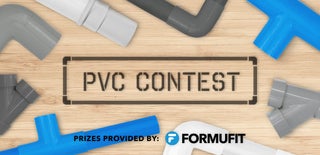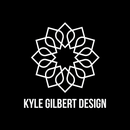Introduction: Make a Millennium Falcon Playhouse - Massive Update
Two years ago, I built my kids a Millennium Falcon playhouse. While it was clearly awesome in many ways, it ended up being mostly a proof of concept. So over the past year, I've been working with my children to start over, almost from scratch, to improve on the prior design's weaknesses. In particular, I focused on the following areas of improvement:
- Better internal ribbing structure and overall sturdyness.
- Larger cockpit space. Comfortably fits all four of my kids.
- Inclusion of a back wall to the cockpit.
- Adding dimension to the front windows.
- Improved interior and exterior detailing to closer match the details in the movies.
- The addition of audio effects.
I'm happy to say that I believe that we've met our goals in each of these areas.
Also, when I started this new version of the Millennium Falcon playhouse, I came across this amazing 360 degree zoomable panorama of the Millennium Falcon which was a tremendous resource in locking in the details.
While most things changed from the first build to the one you see here, one thing in particular remained the same: This project is 95% constructed from PVC board. Not only is it flexible, but it also takes spray paint well, comes in different thicknesses, is easy to cut and drill, glues well, and it is cost-effective. I love the stuff.
As I began this build, I thought I was going to be able to reuse all of the nose cone, so you'll see that in some of the early photos. So unlike my previous build, I started off with the main body of the cockpit. That worked fine until one of my kids accidentally crushed the existing cone and we had to start nearly from scratch. But more on that later. :)
The Kessel Run is waiting, so let's begin with the body section.
Step 1: Framing Out the Body of the Cockpit
Unlike my previous build where I used pvc board for the ribbing, this time I wasn't playing around. Cut some frame pieces out of some scrap wood I had laying around, and I used my little trick for drawing large circles to draw them out on the board before cutting them with a jigsaw.
I finished out the inner skin by spray painting the bottom side of the pvc sheet black, fitting it back under the frame, and securing it with screws.
Step 2: Detailing the Overhead Portion of the Cockpit
Though this took a lot of time, this was my favorite part.
Unlike the first version of the cockpit that I made where I kind of just slapped the detailing together roughly based on the movie photos, this time I propped the body upright so that I could take my time cutting in the light bars, applying interior pinstripe, and drilling holes where the lights needed to be. This took a couple of days to get everything in place to my satisfaction.
Having recently replaced the fluorescent lighting in my garage with LED technology, I cut the old cover into pieces and used them to back each of the large lighted areas. It worked amazingly.
If I ever had to do this again, I would be tempted to draw out the whole interior digitally in Illustrator and then have a sheet of pvc board printed by a local sign shop along with having all the holes, windows, and square buttons cut on a CNC.
Step 3: A Few Additional Notes on the Interior Detailing
I found the easiest way to keep my lines straight from area to area was to run my pinstripe across and then used a box cutter to cut out the areas that needed to be removed.
Like the first version that I built, using the outer and inner layers gave me an inside light chamber. Then, instead of dealing with adding hundreds of LED lights, we just drilled a hole for each one. While I worked on the inside, I had my children add colored gels to the back side of each hole.
We also installed rocker switches at this point as well. They don't actually control anything, but they certainly look cool.
Step 4: Adding Some Fake Buttons
Not only does the Millennium Falcon have a ton of lights and rocker switches, it also has a lot of interior buttons. For these, I just cut each from PVC board and then spray painted some of them blue and then added pinstripe detailing to the others.
Like every good project, it's the monotonous details that really give the thing life. Or, at least that's what Chewie tells me.
Step 5: Adding More Interior Details
Near the front of the body, there are four large overhead details. Like the buttons, we cut these out of PVC board. A little bit of glue and spray paint, and these turned out super nice.
Initially, I tried hanging these with velcro, but when the kept falling off, I used screws instead.
Step 6: Behold the Progress!
And just like that, our overhead canopy is complete and beautiful, exceeding all my expectations, and blowing our first version completely out of the water. This is a little moment of victory.
Step 7: Throwing on Some Lights
As I mentioned before, the idea here was to create a space between the panels where the light is reflecting around because of the white panels. It creates a situation where we can get by without having to attach an LED to each single lighted area.
Here you can see how I haphazardly strung white Christmas LED lights over the canopy as I prepared to add the outer shell.
Step 8: Cutting Out the Back Doorway
Another major improvement over the previous version was the inclusion of a back wall. Like the others, this was cut from 3mm PVC board. And nothing helps create the feeling of an inclosed cockpit area more than the back wall.
I made the opening large enough for me to easily crawl through. I mean, this project is for my kids, but there's no way I was going to cut myself out of this. :)
Step 9: Adding the Outer Shell
We used another sheet of 3mm PVC board as the outer shell for the canopy, inclosing the lights. As you can see through these photos, the effect is pretty amazing, though I needed to reposition some of the Christmas lights to distribute the light better across the large lighted areas.
We may go back with brighter LED lights in the future, but nobody is complaining. In fact, the kids (and visiting family) started taking turns sleeping inside the canopy at this point.
Step 10: Detailing the Back Doorway
Like we did with the canopy, my daughter and I started adding pinstripe to the back wall. We were using a thicker pinstripe, and once we got to this point, we both agreed that the thinner stuff looks so much better, so we took it all down and started over again. It was a setback, but I'm grateful that we took the time to fix it and make it right, especially since it's the most visible from outside.
I also cut quarter inch pvc for the door frame and glued it into place. As much as I wanted that to work, it just felt too flat to me, and I know we could do better. So we did.
Step 11: Improving That Door Jamb
We had some old packing foam in the garage, and we cut this into pieces in the shape of the door frame. After that, we quickly wrapped each piece in fabric (you can see more detailed photos of us doing the same thing further into this build) and then spray painted the pieces to match the reference images.
And while that dried, my boys tried on some fake mustaches and gave us a nice comic relief. These sweet monkeys are the reason I build crazy things.
But that's enough of a break. Let's check out the new door jamb.
Step 12: Additional Detailing on the Back Doorway
With the thinner pinstripe now in place, the back wall is really shaping up! But especially one we installed the foam door jamb. I'd initially mistaken the importance of this component. In retrospect, I realize that it really is the focal component of the back wall. Pretty awesome that we were able to easily make such a huge improvement.
But this plain back wall with an electrical socket... this just isn't going to do. More on that later.
Step 13: Rebuilding the Nose Cone
And then, when things were coming along so nicely, disaster struck. Da da dum! As one of my sons was wrestling me, I gave him the ol' sidestep trick. I felt pretty good about it until he fell right on top of the old nose cone, crushing it's flimsy self into a pile of trash.
And so we took a break from the project for a couple of months while I built up the resolve to keep going.
When inspiration finally struck again, I decided to go back with strips of mdf board. Previously, I had only used strips of pvc, which left the whole thing flimsy and lacking in dimension. As soon as we started back with the wood, I knew that this part was going to look better than ever before.
Step 14: Admiring the Progress
After a couple of hours of work on the nose cone, things started looking amazing. Once again, I took a few minutes to capture the details and be geeked out at our progress.
Step 15: Let's Add Some Trim
I loved the dimension that the boards added, but I thought that if I could cut some thin strips of PVC board on my table saw, that could add even more interest and dimension to the window areas. Fortunately, the PVC board cut amazingly well on the table saw. After a little glue and then some paint to the entire exterior, we finally had the outside ready for detailing.
Step 16: Beginning the Exterior Details
Have you ever noticed how much stuff is added to the outside of the Mellinnium Falcon? It's covered with a mess of greebles and details. Along one side is a large strip of what looks like some sort of mesh wiring with circular holes behind the mesh. While I wasn't certain that it could work, I decided to give corrugated cardboard (here's my instructions for peeling the cardboard) a try for achieving the look. Once I had a nice, long strip peeled, I glued it to the outside along with a couple of thick pieces of pvc board that I had hung onto from a previous project.
It doesn't look like much at this point, but it's a great way of getting some texture on this area of the ship.
Step 17: Continuing With Exterior Details
I knew that I could layer pieces of cut PVC board to build out the rest of the details on the outside of the cockpit, but for the sake of time, I decided to buy a package of foam tiles and cut the details out of foam. I found it interesting that the most flat of all the options at Home Depot was foam that looked like ceramic tile on one side and wood flooring on the other.
For the other details on the side and the top, I used found items around the house to approximate the shapes used in the movies. I've provided notes on the photos to describe the different random items I used.
Step 18: Painting in Exterior Details
Next, I wanted to add lines on the body to show the detail of where the different panels came together. To make this come out as clean as possible, I masked off my lines with painters' tape and then cut out any additional details that I wanted to include. While I painted these lines, my daughter painted over the greeble pieces.
Step 19: Weather Those Greebles
No matter what project I'm working on, one of my favorite things is to add some weathering to the pieces. On the corrugated cardboard, I traced out three circles and then had my daughter take a pencil and start drawing lines across each of the corrugated valleys. Whenever she would come to a circle, I had her mark more strongly with the pencil. Surprisingly, this worked perfectly to give that area a nice vented appearance.
For the details on the top and side, I used a mustard color and dry brushed it along the bases of the detail pieces.
Step 20: Control Panel & Audio
One of the parts that remained mostly untouched from my original Millennium Falcon build was the control panel, but there were two aspects that I wanted to improve upon:
The first was the back of the panel. After looking at some reference photos, I decided it would be best to build an enclosure for the back of the panel. So like the details on the outside of the ship, I cut these pieces from the foam tiles to create an enclosure that massively improves the look of the console from outside the ship and also creates a nice cabinet area for our speakers.
My children's favorite feature of this playhouse is the addition of eight buttons which are scattered around in different areas inside the cockpit and which each play a sound effect such as the hyperdrive kicking in, a flyby, an explosion, guns, or even some theme music.
For the audio controller, we used an Adafruit Audio FX Sound Board. This thing is tiny, easy to wire, has onboard memory, and allows you to connect eight momentary switches to fire audio files. It worked perfectly for this build.
Step 21: Nearly Done!
With the audio effects in place, the kids all piled in to test things out. From these photos, you can see just how roomy this thing is for my four kids.
But there's still one more feature of the console that needs a serious update. The control sticks.
Step 22: 3D Printed Control Sticks
To improve upon my cobbled together control sticks, I decided to do a little 3D modeling in Rhino 3D. Within a few minutes, I had whipped up a nice replica from movie set photos. You can grab my STL here, if you'd like to download the file.
Once I sanded these down a bit, spray painted them, and wrapped each with a piece of pinstripe, they were ready to install.
Step 23: The Final Touch - the False Wall
In an attempt to make the illusion of a complete back of the ship, I painted a scrap piece of plywood black and use the same technique as the door jamb to simulate the padded hallway out of the cockpit. Once these were spray painted to match, I used hot glue to attach each to the plywood.
I wish I'd had enough spare packing foam to make these wider, but it turned out well for what it is.
All that was left to do was to add a bit of paint detailing, and our hard work was finally complete! This has been an enormous project, but my kids are glad that we're finally done, and I'm happy to finally share it with you all.
---------------------
I hope you've liked this build. If so, I'd love to hear your comments, and I'd certainly appreciate both your likes, shares, and contest votes! Any suggestions for improvements or ideas for future projects, please let me know.
But especially for those of you who decide to build something similar yourselves, please share your project photos below. :)
Now, where'd I put that hyperdrive?

Participated in the
PVC Contest 2017

Participated in the
Hand Tools Only Contest 2017













